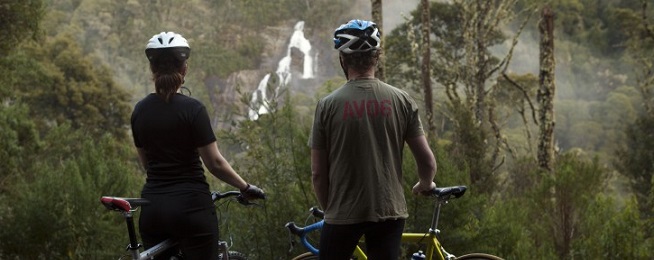With a Tasmania state election due by March 2018, Bicycle Network has made pre-election submissions to the Liberal government, the Labor Party and the Greens.
The key theme is that all government departments, instrumentalities and government business enterprises have a role in delivering on the government’s target of making Tasmania the healthiest state in the nation by 2025.
We also say that there needs to be partnerships with local government and the broader community to make it work.
Bicycle Network proposes that:
- Health and wellbeing be a key priority in every government department, with a view to encouraging a more active workforce and thereby improving health outcomes.
- That the programs be overseen by a high-level unit, based in the Department of Premier and Cabinet, to ensure a consistent approach across government so that targets are set and achieved.
- That an independent health auditor report to State Parliament on the initiatives taken and the outcomes delivered.
- That the government enter a partnership with the Menzies Institute for Medical Research to conduct a long-term study on the effects of increased active travel and other health initiatives in the workplace, both in government and in the private sector.
- That there be a formal agreement with local government to align its priorities in preventative health to help meet the Healthy Tasmania target.
The submission also outlined six key initiatives the government needs to take on riding and walking and important deliverers of improved health and wellbeing.
These are:
- Incentives to encourage more people to ride or walk to work.
- An active transport plan for all state government departments.
- A stand-alone fund for cycle infrastructure constructed by local government on a 50–50 funding basis.
- Ensure active travel plays a key role in planning decisions under the state planning reforms.
- Encourage a regional, rather than a council-by-council, approach to transport and health issues.
- The continued funding of Bicycle Network’s Ride2School initiative.
The submission says Tasmania still spends less per capita on bicycle infrastructure than any other states – a position at odds with its public pronouncements on cycle tourism, its Healthy Tasmania Five-Year Strategy, the recognised role of active travel in health and wellbeing and liveable cities, and its strong support of the University of Tasmania’s developments in Hobart and Launceston.
UTAS is a nationally recognised leader in active transport and this reputation will be further cemented by its new sustainable transport strategy.
There are now 26 separate Tasmanian reports by state and local government on strategies and plans relating to cycling in all its forms.
These address the growth in bicycle tourism, particularly mountain biking, urban bicycle networks, access to transport, the role of active transport in health and wellbeing, the role of active transport in easing congestion in our cities.
Still in the pipeline is the City of Hobart’s transport strategy and the development of the state government’s transport access policy following public submissions on its discussion paper.
Bicycle Network says that to make up lost ground, and keep pace with change the following funding and policy initiatives should be implemented.
SPEND at least $10 per person per year through a $21.3 million bike infrastructure program over the next four years. This fund would allow local government to complete the missing sections in the urban cycle networks and on the North-West Coastal pathway project on a 50–50 funding basis. The RACT’s active transport policy supports a stand-alone bicycle infrastructure fund.
INCREASE funding under the state roads asset management program to improve popular road cycling routes. This currently stands at $5m over 4 years, beginning in 2015–16, or $1.25M a year. The increase is required in light of cost overruns on the Bonnet Hill project, the addition of improvements to Grasstree Hill Rd at Risdon Vale to this program, and to begin a staged improvement of the West Tamar Highway in 2018–19.
DEVELOP a state policy for all new building developments to include bike parking and end-of-ride facilities such as parking loops, secure storage and showers. Provide incentives for businesses and developers to retrofit existing buildings with bicycle parking and change facilities, particularly in areas targeting tourists.
DEVELOP a policy on electric cars and bikes, including public charging facilities in both urban and regional areas.
FUND Bicycle Network’s Ride2School program over the next five years, beginning with $100,000 in 2018 (0.6 FTE) and growing to $260,000 by 2022. The number of students who have benefited from the program has grown from 1,141 at July 1 2015 to 3,121 by June 30 2016.
ESTABLISH active travel plans in all Tasmanian schools. This should include a plan for a rollout of bike parking by the Education Department in all Tasmanian schools, consistent with reforms in planning legislation.
DEVELOP an active transport plan as part of the wider re-evaluation of Greater Launceston and Greater Hobart transport challenges following the University of Tasmania’s decision to move its campus to Inveresk and its student accommodation development in Melville St, Hobart.
EXTEND the positive provision policy on bicycle infrastructure on state roads to all new local-government development roads, including private sub-division development. This should be informed by the establishment of a state-wide cycle network database and infrastructure quality assessment monitoring system for Tasmania.
DEVELOP new long-term urban transport strategies before Tasmania confronts the same problems larger Australians cities now experience. As part of this, review the Tasmanian Walking and Cycling for Active Transport Strategy 2010 and provide an implementation report.
REVIEW the Principal Urban Bicycle Network plans for all metropolitan regions and extend to all regional city centres across Tasmania which maps out an integrated network of priority bicycle routes; this would include tourism paths and trails as well as on-road bicycle infrastructure.



